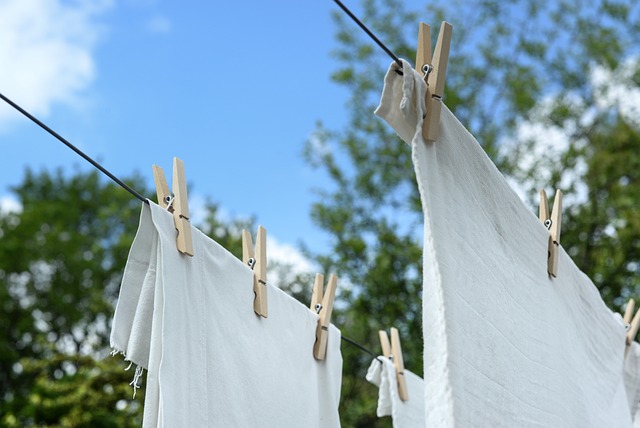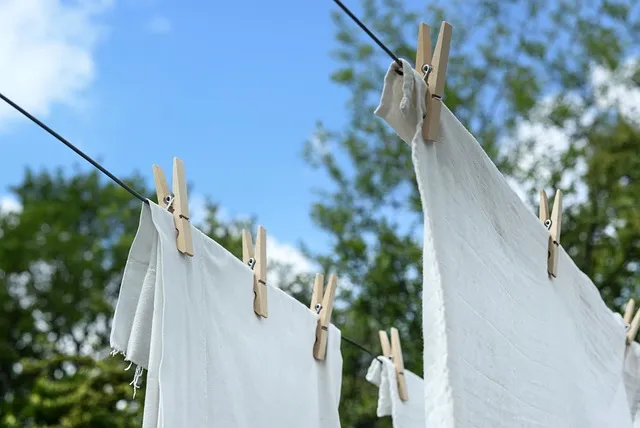How to Clean the Dryer Hood?
First, safety is key. Start by unplugging your dryer. This is non-negotiable; you wouldn’t handle an electric device with it still running, right? Next, remove the exhaust hood from the wall. Most are held in place by screws, so a screwdriver will do the trick. Once you’ve got it off, give it a good shake outdoors to dislodge any loose debris.
The real magic happens when you grab a vacuum with a hose attachment. Insert the hose into the exhaust hood and vacuum out the lint. Think of this as giving your dryer’s airways a deep cleanse. For any stubborn clumps, use a brush or a flexible cleaning tool designed for this purpose.
Don’t forget to check the duct that connects to the exhaust hood. A clogged duct can defeat your efforts, so use a similar cleaning technique there. Once everything’s clean, reattach the exhaust hood and plug the dryer back in.
It’s a bit like giving your dryer a spa day; clean it up, and it’ll run smoother, safer, and more efficiently. Plus, you’ll prevent potential fire hazards and save on energy costs.
The Ultimate Guide: How to Properly Clean Your Dryer’s Exhaust Hood for Maximum Efficiency
First off, start by unplugging the dryer. This is your safety net, ensuring you don’t accidentally zap yourself or mess up any wires. Next, you’ll need a screwdriver to remove the screws holding the exhaust hood in place. Don’t worry; this isn’t rocket science—just a few screws and you’re in!
Once you’ve got the hood off, you’ll see a mess of lint and grime. Think of it like cleaning out a dusty old attic. Grab a vacuum with a hose attachment and gently suck up the loose lint. If you see stubborn clumps, use a brush or a long, flexible tool to dislodge them. It’s like using a broom to clear away cobwebs.
Now, it’s time to inspect the ductwork. Check for any signs of damage or blockages. Imagine this as checking the plumbing in your home—everything needs to be clear for smooth operation. If you find any obstructions, you might need to use a long brush or even call a professional to ensure everything is spotless.
Don’t forget to clean the outside vent cover too. This part is exposed to the elements and can easily become clogged with debris. A quick wipe with a damp cloth will usually do the trick. Just make sure everything is dry before you reassemble the hood.
Reattach the exhaust hood and plug your dryer back in. Run a short cycle to make sure everything is working correctly. With a clean exhaust hood, your dryer will run more efficiently, saving you time and energy. It’s like giving your dryer a fresh start, ensuring it’s ready to tackle your laundry loads with renewed vigor.
Avoiding Dryer Dangers: Essential Tips for Thoroughly Cleaning Your Exhaust Hood
First off, imagine your exhaust hood as a superhero. Its job is to keep your home safe from the potentially dangerous lint and moisture that build up in the dryer. But just like any superhero, if it’s not kept in tip-top shape, it can’t perform its duties properly. That’s why regular cleaning is a must.
Start by disconnecting the dryer from its power source. Safety first! Then, remove the exhaust hood cover. You’ll likely find lint and debris clinging to it. Use a vacuum with a hose attachment or a lint brush to get rid of this buildup. Don’t just stop at the visible stuff. The ductwork connected to the exhaust hood can also accumulate lint, and it’s crucial to clean it out thoroughly. A long, flexible brush can help you reach deep into these ducts.
While you’re at it, check for any signs of damage or wear in the ductwork. Small tears or kinks can restrict airflow and create a fire risk. If you find any issues, it’s better to replace the damaged sections sooner rather than later.
Now, let’s not forget about the area where the exhaust hood connects to the outside of your house. This external vent needs to be clear of obstructions like leaves or nests, which can block airflow and lead to dangerous situations.
Step-by-Step: How to Safely and Effectively Clean Your Dryer’s Exhaust Hood
First, make sure to unplug your dryer to avoid any accidents. Safety first! Next, remove the exhaust duct from the back of the dryer. You might need a screwdriver to loosen the clamps. Once detached, take the duct outside or to a well-ventilated area for cleaning.
Grab a vacuum with a long hose attachment and carefully vacuum inside the duct to remove loose lint and debris. It’s amazing how much buildup can accumulate over time! For a deeper clean, use a dryer vent cleaning brush, which you can find at most hardware stores. Insert the brush into the duct and twist it to dislodge any stubborn lint or grime. You might need to repeat this a few times to get it completely clean.

Now, focus on the exhaust hood itself. Remove the cover, usually held in place by screws. Clean the cover with a damp cloth, ensuring all lint is wiped away. If the hood has a screen or filter, rinse it with warm water and let it dry completely before reattaching.
Reassemble everything by securing the cover and reattaching the duct to your dryer. Ensure all connections are tight to prevent any leaks. Finally, plug your dryer back in and run it on a short cycle to ensure everything is functioning properly.
Why Regular Exhaust Hood Cleaning is Crucial for Your Dryer’s Performance and Safety
Imagine your dryer working like a well-oiled machine. It’s spinning, drying your clothes, and making your life easier. Now, picture that same machine struggling because its exhaust hood is clogged with lint and debris. It’s like trying to run a marathon with a bag over your head—definitely not ideal! A clogged exhaust hood restricts airflow, causing your dryer to overheat and work harder. This not only wastes energy but also shortens the lifespan of your appliance.
But here’s where it gets even more important: safety. Lint buildup in the exhaust system is a major fire hazard. In fact, it’s one of the leading causes of dryer-related house fires. When lint accumulates, it can block the flow of hot air and create a dangerously high temperature inside the dryer. This overheating can ignite the lint and trigger a fire. Yikes!
Regular cleaning ensures that your dryer’s exhaust hood is clear of any blockages. It allows hot air to escape efficiently, keeping your dryer cool and reducing the risk of a fire. Plus, a well-maintained exhaust hood helps your dryer operate at peak performance, so your clothes come out fresh and dry every time.
In short, investing a little time in cleaning your dryer’s exhaust hood can make a big difference in both efficiency and safety. After all, a clean dryer is a happy, healthy dryer—one that keeps your clothes dry and your home safe.
Expert Advice: The Do’s and Don’ts of Cleaning Your Dryer’s Exhaust Hood
First off, do check the exhaust hood regularly. Just like you wouldn’t let a dirty air filter ruin your car’s performance, you shouldn’t ignore the buildup of lint and debris in your dryer’s exhaust system. Make it a habit to inspect the hood and ductwork every few months. A quick look can prevent major problems down the line.
Now, don’t ignore the importance of safety. Unplug your dryer before you start cleaning. This might seem like a no-brainer, but you’d be surprised how often people forget this step. It’s like trying to fix a toaster without unplugging it first—dangerous and unnecessary.
Do use a vacuum with a long hose to remove lint from the exhaust hood. This tool is your best friend in the fight against buildup. Just as you’d use a special brush to clean delicate items, a vacuum will gently but effectively clear out the debris without damaging your system.
And here’s a big don’t: don’t use a leaf blower or other high-powered tools. While they might seem like a quick fix, they can actually push lint further into your system, making the problem worse. It’s like using a hammer to fix a watch—too much force can do more harm than good.
Finally, do remember to check the exterior vent for obstructions. Birds and other critters sometimes think your exhaust vent makes a cozy home, which can block airflow and lead to dangerous conditions. Keeping the vent clear is like making sure your car’s exhaust system isn’t blocked—essential for safe and efficient operation.
From Grime to Shine: A Comprehensive Tutorial on Cleaning Your Dryer’s Exhaust Hood
First things first: safety. Unplug your dryer before you start. Once it’s disconnected, remove the exhaust duct from the back of your dryer. This is often where the most noticeable buildup occurs. A vacuum with a hose attachment is your best friend here—suck out any lint you can reach. For those hard-to-reach spots, a long, flexible brush can be a game changer. You might be amazed at how much lint hides in the nooks and crannies!
Next, tackle the hood itself. Clean the surface with a mild detergent and warm water, scrubbing away any grime. If the hood is particularly grimy, consider using a degreaser to break down stubborn residue. Rinse thoroughly and dry completely to prevent any moisture buildup.
Now, let’s not forget the ductwork. Even if it seems clean, a periodic inspection can prevent future issues. Reattach everything carefully, making sure there are no loose connections or kinks in the ductwork.

The ultimate goal here is efficiency and safety. A well-maintained exhaust hood ensures your dryer operates smoothly and reduces the risk of fires. It’s a bit of work, but the peace of mind and improved dryer performance make it well worth the effort. Plus, it’s one less thing to worry about on your home maintenance checklist!
Preventing Fires: How Proper Cleaning of Your Dryer’s Exhaust Hood Can Save Lives
Lint buildup in your dryer’s exhaust hood is a major fire hazard. When lint accumulates, it restricts airflow and causes the dryer to overheat. This overheating can ignite the lint and create a fire hazard. Picture this: a tiny spark in a mountain of lint is like lighting a fuse. That’s why keeping this area clean is essential.
Proper cleaning is simple but effective. Start by unplugging your dryer and carefully removing the exhaust hood cover. Use a vacuum or a brush to clear out any lint buildup. It’s like dusting off the cobwebs in a forgotten attic. Make sure to also check the vent hose for any blockages or damage. It’s similar to ensuring there are no kinks in a garden hose before watering your plants.
Remember, a clean exhaust hood not only reduces fire risk but also improves your dryer’s efficiency. When the airflow isn’t restricted, your dryer doesn’t have to work as hard, which means lower energy bills and less wear and tear on your appliance.
So, while it might seem like a small task, regularly cleaning your dryer’s exhaust hood is a crucial step in safeguarding your home. It’s an easy way to prevent a potentially devastating fire and keep your family safe.


Comments are closed.